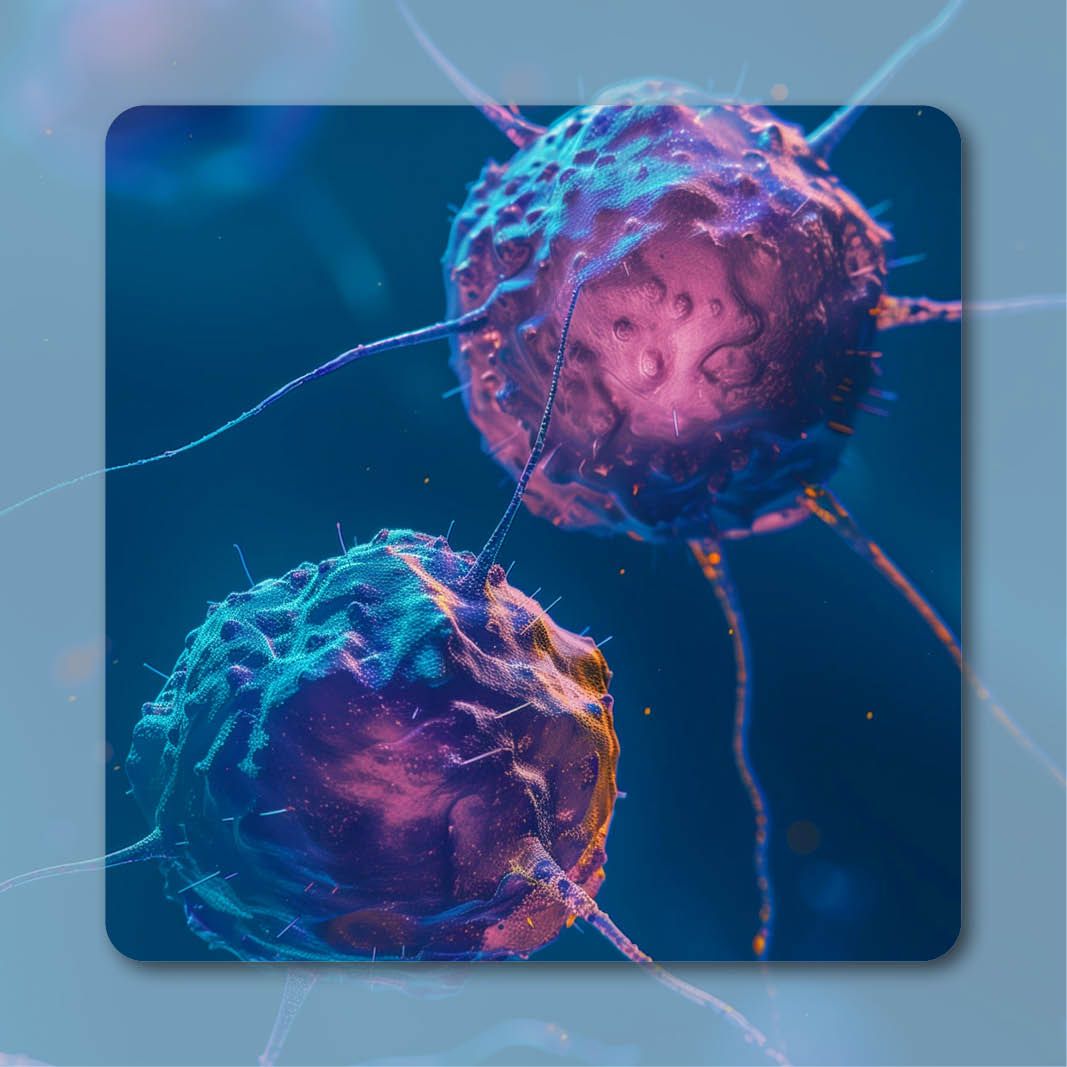News
Article
BDTX-1535 Generates Early Signals of Antitumor Activity in R/R EGFR+ NSCLC
BDTX-1535 yielded durable clinical activity in patients with relapsed/refractory, EGFR-mutant NSCLC harboring resistance mutations.
Danny Nguyen, MD

The fourth-generation EGFR TKI BDTX-1535 yielded robust clinical activity and durability in patients with relapsed/refractory, EGFR-mutant non–small cell lung cancer (NSCLC) harboring classical, non-classical, or C797S resistance mutations, according to initial findings from a phase 2 trial (NCT05256290).1
At a data cutoff of August 17, 2024, 27 patients were evaluable for preliminary overall response rate (ORR) and durability, including 22 patients who met protocol criteria. Among those 22 evaluable patients, the preliminary ORR was 36%. In total, 19 of those 22 patients had disease expressing known osimertinib (Tagrisso) resistance mutations: EGFR C797S or PACC. Of those 19 patients, the ORR was 42%; 5 patients achieved a confirmed partial response (PR), including 1 patient who converted from a PR to an unconfirmed complete response at 8 months and was awaiting a confirmatory scan. Three patients had an unconfirmed PR at first scan and were awaiting confirmatory scans. Additionally, 9 patients had a best response of stable disease.
A daily dose of 200 mg of BDXT-1535 has been selected as the dose for pivotal clinical development of the agent based on pharmacokinetics, safety, and tolerability data from 20 patients each who received the agent at 100 mg or 200 mg.
“Patients with recurrent EGFR-mutant NSCLC have few treatment options, with chemotherapy delivering limited benefit and significant toxicity, and initial phase 2 data with BDTX-1535 look quite promising,” Danny Nguyen, MD, an assistant clinical professor in the Department of Medical Oncology and Therapeutics Research at City of Hope in Huntington Beach and Irvine, California, stated in a news release. “There is a significant unmet medical need for an effective and well-tolerated oral therapy for patients who progress on osimertinib, as well as newly diagnosed patients with non-classical mutations.”
The phase 2 trial began enrollment in August 2023. Patients with relapsed/refractory NSCLC harboring non-classical EGFR mutations were enrolled to cohort 1, and those with NSCLC harboring C797S resistance mutations were enrolled to cohort 2. The safety assessment and dose selection were based on data from the first 40 patients randomly assigned to receive once-daily BDTX-1535 at either 100 mg or 200 mg across both cohorts.
To enroll in the NSCLC cohorts, patients at least 18 years of age needed to have measurable disease by RECIST 1.1 criteria, adequate organ and bone marrow function, a life expectancy of at least 3 months, a sufficient performance status, and confirmed NSCLC without small cell lung cancer transformation.2 Patients were permitted to have brain metastases and needed to have disease progression following treatment with or intolerance to standard-of-care therapies.
The primary end point of the phase 2 portion of the trial was ORR. Key secondary end points included treatment-emergent adverse effects (AEs), plasma concentration, preliminary antitumor activity, duration of response (DOR), progression-free survival, central nervous system ORR, and the identification of the optimal dose of BDXT-1535.
At a mean follow-up of 4.7 months, the median DOR was approximately 8 months or more for the first 3 patients to achieve a PR.1 Furthermore, 14 of the 19 patients with known osimertinib resistance mutations remained on treatment as of data cutoff.
In the 200-mg cohort, BDTX-1535 was tolerable. Most AEs were mild or moderate, and investigators observed no new safety signals. The most common on-target treatment-related AEs were rash (70%) and diarrhea (35%). Two cases of grade 3 rash were reported; however, there were no cases of grade 4 rash or grade 3/4 diarrhea.
“We are pleased to see significant phase 2 clinical activity and tolerability that are consistent with our phase 1 results,” Mark Velleca, MD, PhD, chief executive officer of Black Diamond Therapeutics, added in the news release. “We believe that the activity observed in the recurrent setting can translate to robust clinical benefit in the first-line setting, and we look forward to sharing data from our trial in newly diagnosed patients in [the first quarter of] 2025.”
The phase 2 trial continues to enroll patients in its second- and third-line cohorts, as well as its first-line cohort of patients with non-classical EGFR mutations. In the first quarter of 2025, Black Diamond Therapeutics expects to report initial results from the frontline cohort of patients with non-classical EGFR mutations and share possible registrational paths for BDTX-1535 in the recurrent NSCLC setting, based on FDA feedback.
References
- Black Diamond Therapeutics announces initial phase 2 data demonstrating robust anti-tumor activity of BDTX-1535 in patients with recurrent EGFRm NSCLC who present with a broad spectrum of classical, non-classical, and C797S resistance mutations. Black Diamond Therapeutics, Inc. September 23, 2024. Accessed September 23, 2024. https://investors.blackdiamondtherapeutics.com/news-releases/news-release-details/black-diamond-therapeutics-announces-initial-phase-2-data
- Phase 1/2 study of BDTX-1535 in patients with glioblastoma or non-small cell lung cancer with EGFR mutations. ClinicalTrials.gov. Updated May 30, 2024. Accessed September 23, 2024. https://clinicaltrials.gov/study/NCT05256290









